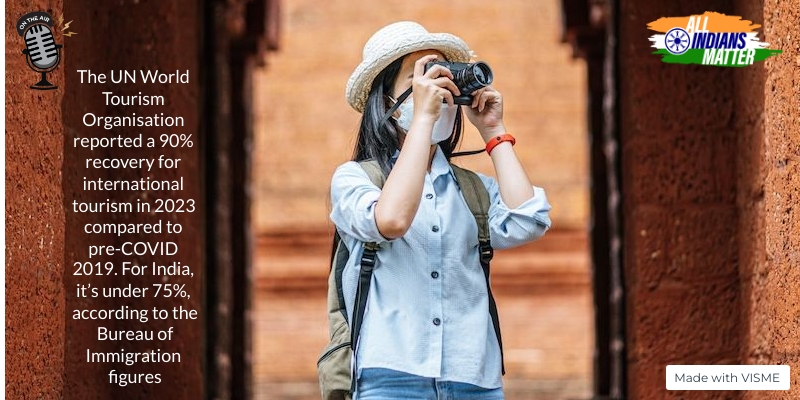Ashraf Engineer
December 9, 2023
EPISODE TRANSCRIPT
Hello and welcome to All Indians Matter. I am Ashraf Engineer.
Recently-released data compiled by the National Crime Records Bureau, or NCRB, shows that at least 4,45,256 cases of crimes against women were registered in 2022, a 4% increase from 2021. This translates to a staggering 51 police complaints every hour. The major crimes against women included cruelty by husband or his relatives, kidnapping and abduction, assault with intent to outrage modesty and rape. Overall, the crime rate registered per lakh women population was 66.4 in 2022 in comparison with 64.5 in 2021. In 2022, the World Health Organization had said that one in three women globally faces gender-based violence and the numbers for India are similar. The NCRB report, titled ‘Crime in India 2022’, is based on data from 36 states and Union territories as well as Central agencies, and is used by lawmakers and Union and state governments to formulate policies. The numbers are a damning indictment of Indian society and its patriarchy.
SIGNATURE TUNE
The NCRB report, delayed by at least five months, said that of the registered crimes against women,
cruelty by spouses or their relatives accounted for 31.4%, followed by kidnapping and abduction at 19.2%, assault “with Intent to outrage modesty” at 18.7% and rape at 7.1%.
Of the 31,516 rapes reported, the maximum of 5,399 were reported from Rajasthan in 2022, followed by Uttar Pradesh at 3,690, Madhya Pradesh at 3,029, Maharashtra at 2,904 and Haryana at 1,787. Delhi reported 1,212 rape cases.
With so many reported annually, India has earned the shameful moniker of ‘the rape capital of the world’. This is not just because of the high number of rapes but the way survivors are treated – stigmatised by society, and often shamed by the police and judiciary.
Most recently, Bilkis Bano, who was gangraped and made to witness 14 members of her family killed by Hindu neighbours during the 2002 Gujarat riots described her “searing pain” after her rapists were freed. The treatment of Bilkis Bano made global headlines, reinforcing the view that India is brutal to its women.
With an average of three rapes a day, Delhi is still the most unsafe metropolis – and I’m making the distinction between city and metropolis here – for women in India, with 14,158 crimes reported against women. This figure was a slight increase from the 13,982 in 2021. Delhi’s figures translate to 186.9 crimes against women per lakh people and the cityy accounted for 29.04% of the 48,755 crimes against women reported in 19 major cities, suggesting a serious flaw in the law and order machinery. The Delhi police is controlled by the Union Home Ministry headed by Amit Shah.
However, it was Jaipur that was the most unsafe city overall in India with 239.3 crimes against women per lakh people. Rajasthan’s capital reported 3,479 such crimes in 2022.
Of the 1,752 cases lodged for insulting the modesty of women, Mumbai topped the list with 667, followed by 400 in Delhi and 250 in Kolkata.
Studies show that women are abused from a young age by close relatives, neighbours and friends, especially in remote areas. Southern and North-Eastern states fare better when it comes to treatment of women. For example, sex-selective abortions and the mistreatment of infant girls are more common in the North.
The NCRB data suggests that women feel highly vulnerable in their marital homes, with instances like domestic violence, acid attacks and dowry deaths being very common.
While this government has a lot to say about honouring women and protecting the girl child, with Prime Minister Narendra Modi making grand proclamations about how he has supposedly improved their lot, the fact is that after almost 10 years of this regime crimes against women are getting more common. The numbers show a year-on-year rise, except in 2020, when COVID-19 forced a lockdown and impacted data collection.
Social activists say this is a grave concern but the authorities dismiss that by claiming the numbers are rising because there is better reporting now and more women are registering complaints.
The Delhi police claimed after the NCRB data was released that they register all complaints, turning no one away. They added that often people from other states file such complaints, which are then transferred to the police forces concerned.
Causality, of course, is the factor to consider for such crimes. And that would include traditions, socioeconomic standing, etc. Women are trapped in many ways and crimes aren’t confined to a selected group, class or culture. This, despite many legislative and other measures.
Rape, domestic violence, kidnapping, molestation, etc, have not just physical but also psychological impacts on women that prevent them from leading normal lives. These crimes harm not just the women but also their children, entire families and even communities across generations.
A BBC report in the past that there is one act of violence against Indian women every 5 minutes. The lack of financial independence and family support, or compromises for the sake of the children, are mainly why women stop short of raising their voice.
Low literacy is a concern too. In India, women’s literacy is estimated at 67% compared to the male literacy level of 84.7%. This usually means that the women are completely dependent on their men.
It is estimated also that 95% of the crimes against women go unreported. So, it can only be imagined how much worse than the NCRB estimates the situation on the ground is. Perhaps a more holistic crime survey by an independent body is what’s needed.
There could be some steps that the government could take to remedy the situation, although it’s difficult without a wider societal shift away from patriarchy.
Fast-track courts to try crimes against women could be part of the solution. It would put such cases on top of the judiciary’s priority list, which is the need of the hour. Stricter punishments have often been advocated and enacted but that hasn’t done the trick. Instead, increasing awareness of women’s rights and a supporting judicial and social infrastructure in the form of free legal aid and halfway homes would help. Greater sensitisation of the judiciary and the police force would encourage women to seek help when they need it.
Crimes against women make for a deeply entrenched epidemic in India and it is critical that we act against it now. Laws by themselves aren’t sufficient; it is the responsibility of each citizen to ensure women’s safety.
In the end, gender equality is the only solution.
Thank you all for listening. Please visit allindiansmatter.in for more columns and audio podcasts. You can follow me on Twitter at @AshrafEngineer and @AllIndiansCount. Search for the All Indians Matter page on Facebook. On Instagram, the handle is @AllIndiansMatter. Email me at editor@allindiansmatter.in. Catch you again soon.






